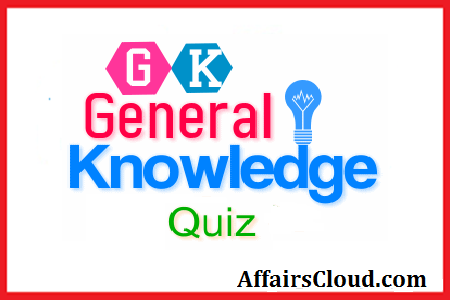Hello Aspirants. Welcome to Online General Knowledge section in Affairs cloud, which is important for all the competitive exams. We have created Some questions related to India Gk (Indian History) !!!
- The History of India has been broadly divided into ……………………. distinct periods
1.4
2.3
3.2
4.6
5.None of theseAnswer – 2.3
Explanation :
Three distinct periods
1.Ancient India
2.Medieval India
3.Modern India - ……………… city was found in 7 layers which indicates that it was rebuilt 7 times mostly due to the flooding of the Indus River.
1.Ropar
2.Kalibangan
3.Harappa
4.Mohenjo Daro
5.None of theseAnswer – 4. Mohenjo Daro
Explanation :
Located in Sindh,currently Pakistan the name Mohenjo Daro is a Sindhi name which means ‘Mound of the Dead!’. It is said to be built around 2600 BCE on the Indus river and was in the same time-frame as Ancient Egypt, Mesopotamia and Crete.It was rediscovered in 1922 by Rakhaldas Bandyopadhyay. The city is divided into two parts, the so-called Citadel and the Lower City. - Which of the following is not Veda ?
1.Rig
2.Sama
3.Atharva
4.Yajur
5.PuranasAnswer – 5.Puranas
Explanation :
There were 4 Vedas – Rig, Yajur, Sama, Atharva. - Gauthama Siddhartha attained enlightenment at …………………. under a papal tree(Bodhi tree)
1.Badayun
2.Urayur
3.Bodh Gaya
4.Pundravardhana
5.None of theseAnswer – 3.Bodh Gaya
Explanation :
Bodh Gaya is a religious site and place of pilgrimage associated with the Mahabodhi Temple Complex in Gaya district in the Indian state of Bihar. - Shivaji Bhonsle was the most powerful ………………………. King
1.Sikh
2.Maratha
3.Mughal
4.Mauryan
5.None of theseAnswer – 2.Maratha
Explanation :
Shivaji (also Chhatrapati Shivaji Maharaj, Shivaji Raje Bhosale) was the Founder of Maratha Empire in India. He was born in 1627 A.D. (or 1630 A.D.) at Shivneri, a hill fort near Puna. His father Shahaji Raje Bhosale was employed as an officer in the army of the Sultan of Bijapur - ………………………… was the first Sikh guru.
1.Guru Gobind Singh
2.Ranjit Singh
3.Narayanrao Peshwa
4.Guru Nanak Dev
5.None of theseAnswer – 4.Guru Nanak Dev
Explanation :
Guru Nanak Dev was the first Sikh guru.The Sikh khalsa (army of the pure) under tenth Guru – Guru Gobind Singh rose up against the economic and political repressions in Punjab toward the end of Aurangzeb’s rule. By the 1770s, Sikh hegemony extended from the Indus in the west to the Yamuna in the east, from Multan in the south to Jammu in the north. - The first battle of Panipat was held in …………………….
1.1540
2.1562
3.1526
4.1545
5.None of theseAnswer – 3.1526
Explanation :
The first battle of Panipat was held in 1526 between Ibrahim Lodhi(Delhi ruler) and Babur(Kabul) - Who is known as the ‘Grand Old Man of India’?
1.Surendranath Banerjee
2.Mahatham Gandhi
3.Dadabhai Naoroji
4.Gopal Krishna Gokhale
5.None of theseAnswer – 3.Dadabhai Naoroji
Explanation :
Dadabhai Naoroji, known as the Grand Old Man of India, was a Parsi intellectual, educator, cotton trader, and an early Indian political and social leader - Humayun was the son of ……………………..
1.Babur
2.Sher Shah
3.Shajahan
4.Ibrahim Lodhi
5.None of theseAnswer – 1.Babur
Explanation :
Humayun was the second Mughal Emperor who ruled over territory in what is now Afghanistan, Pakistan, and parts of northern India from 1531–1540 and again from 1555–1556. - Second battle of Panipat was held in 1556 and it was fought between ?
1.Hemu and Akbar
2.Akbar and Humayun
3.Hemu and Sher shah
4.Akbar and Sivaji
5.None of theseAnswer – 1. Akbar and Hemu
Explanation :
The Second Battle of Panipat was fought on November 5, 1556, between the forces of Hemu, the Hindu ruler of north India from Delhi, and the army of Akbar. It was a decisive victory for Akbar’s generals Khan Zaman I and Bairam Khan
AffairsCloud Recommends Oliveboard Mock Test
AffairsCloud Ebook - Support Us to Grow
Govt Jobs by Category
Bank Jobs Notification



